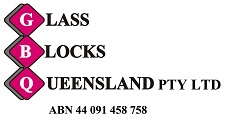|
Fire Rated Glass Blocks
There are a couple of common misconceptions regarding fire ratings and glass blocks.
One is that all glass blocks are fire rated. Another is that blocks advertised as fire
rated can be installed in any manner. Both are incorrect.
To clarify, there are several different FRLs, or Fire Rating Levels and only certain blocks
can be used to meet them. However, it must also be emphasised that the rating is given to
the entire panel, including a specific type of frame and other fire rated materials installed
in a manner tested and approved by the building authorities. Blocks on their own have no inherent
fire rating so if they are not installed correctly, they will not comply. And, just as "fire rated"
glass blocks installed in a non-approved manner will not achieve any kind of rating, likewise no matter
how you install non fire rated blocks, they cannot be turned into fire rated ones.
Glass Blocks Queensland is able to supply and install glass blocks to meet a wide range of fire ratings.
Because of the way they have to be installed, we cannot provide fire rated panels prefabricated,
nor can we supply DIY kits. It is specialised work and needs to be carried out by a licensee of
the manufacturer to ensure full compliance with regulations.
If you have been advised by your architect/builder/certifier/council that your panels require a fire rating,
they will have to confirm the exact FRL that needs to be achieved. Prices vary enormously, and before
we can provide any indication of costs, we need to establish which blocks we are able to use. An
explanation of the fire rating system follows below. If you have any questions, please don't
hesitate to contact us.
Fire Rating Technical Data
The Building Code of Australia (BCA) addresses fire ratings in the same way for all
building materials. Similar systems are used elsewhere in the world as well.
The Fire Resistance Level (FRL) is a set of three numbers. Each number represents
the number of minutes that an element can withstand a 'standard' fire while still
delivering appropriate performance for the fire situation. The objective is to provide
a building in which the fire can be contained in one fire compartment separated from
others by fire rated partitions. The fire authorities must be able to access the burning
building after the fire has taken hold to evacuate occupants and to fight the fire. They
must be able to do this for a given period of time in relative safety.
To establish the FRL, standard furnace tests are carried out on building systems.
The systems are loaded, and thermocouples measure temperature on all of the
surfaces. Timers measure the time it takes for the system to cease to
perform satisfactorily.
The three numbers represent : Structural / Integrity / Insulation
The first number is the number of minutes that the system can carry the
appropriate fire load without collapsing.
The second number is the number of minutes before fire breaks through the
cladding of the system. This represents a breach of the fire compartment.
The third number is the number of minutes before the temperature on the non-
fire side of the system reaches an unacceptable level.
Glass always has a dash instead of a number for the structural category as glass is
not a structural element - i.e. it is not load bearing. It should be noted, however,
that a fire rated glass block panel is being installed into a wall that does meet the
structural requirement and, provided the surrounding structure does not collapse, the
glass block panel will be structurally sound for the requisite period.
Fire Ratings - BAL
A separate set of ratings covers bushfire zones - Bushfire Attack Level or BAL. Whereas
installations covered by the FRL system are designed to contain fire inside buildings, the
focus of the BAL system is on keeping airborne burning materials out and protection against
radiant heat. There are six levels of risk, determined by factors such as density and type
of vegetation and the slope of the land.
For most BAL ratings, no special conditions have to be met by glass block panels, and they
can be installed using the Ezylay Silicone or Mortar systems. Only for the highest category
BAL-FZ - 'Flame Zone' where it is deemed there is a significant risk of direct flame contact,
is a panel required to be fire rated. Even then, the equivalent of FRL -/60/- is all that is
required.
|



